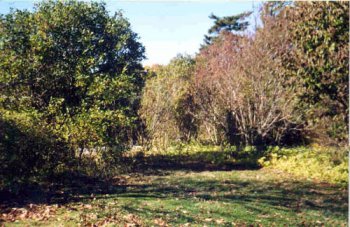The Crawley Family
1826-1894
Thomas Crawley was born in Ipswich, England in 1757. He served in the Royal Navy for forty years, retiring as a captain. After his retirement, he was appointed to the position of commander. He married Esther Bernal and they had three sons, Henry William, Edmund Albern, and Frederic Sidney.
Thomas Crawley held a number of positions in the colonial government of Cape Breton. His name appears on the listing of members for the Executive Council in 1788, 1794, 1806, 1807, 1812, and 1820. It is unknown whether Crawley held his seat on the Executive Council continuously since he was appointed to other administrative positions during his lifetime. Some scholars believe that he may have served on the Executive Council on a continuous basis, judging from his quiet and friendly nature. It is also possible to infer that Crawley was very trustworthy, as Governor Despard gave him power-of-attorney when he and his wife returned to England.
In addition to his time spent on Executive Council matters, Crawley held the rank of Major in the militia. In 1803, Crawley was appointed to the post of Surveyor-General of Cape Breton which later became known by the title of Surveyor of Lands in 1809. Governor Despard appointed him as a Justice of the Peace in 1810. He also served as a Superintendent of Mines. However, his major contributions to life in Cape Breton rested with his work as a surveyor. As a surveyor, he was responsible for dividing lots of land for settlers; preparing plans, descriptions, and affidavits; and completing the grants for purchased lands. Thomas Crawley retired as a surveyor in approximately 1834.
While Crawley held land in Westmount and Boularderie Island, he chose to make his home in Westmount. His estate covered 1800 acres and engulfed the David Mathews property. He renovated or replaced the Mathews' mansion with a much larger thirty-three room home called "Yorkfield." Like the Mathews residence, the Crawley home became known as one of the most prestigious and distinguished homes in Sydney. His family hosted numerous visiting dignitaries, including officers of British and French ships docked in Sydney. Upon Thomas Crawley's death in 1851, Henry William Crawley inherited his father's estate.

The Crawley Estate is shown on the right-hand side of this picture
Courtesy of the Beaton Institute
Henry Crawley was born in 1795 at Crawley Creek. He was the eldest son of Thomas and Esther Crawley. He married Ann MacLean. Crawley was appointed vestryman at St. George's Church in 1821 and 1822. He also served as the Sydney Grammar School teacher until 1825. Between 1832 and 1848, Crawley served as a Commissioner of Crown Lands, following in his father's footsteps as a surveyor. He inherited the Point Amelia estate and it was described by R.J. Uniacke as a "pretty place" with a well-kept garden and orchard. The Crawley estate was destroyed by fire in 1894. Henry Crawley died in 1888 at the age of 93.
Within Petersfield Provincial Park today, the area most associated with the Crawleys is called the "old field" by botanist Mary Williams. This is a large section within the park and it extends along Crawley Creek and then cuts across the park in an east-west direction to Sydney Harbour. While this area is considered to be influenced most by the Crawley family, this is not to say that they did not have an impact on other portions of Point Amelia. Rather, researchers cannot conclusively state whether introduced plant specimens came from the Crawley or Mathews family. Also, the McLennan family may have introduced plants at the southern side of this site.

A small woodland area of Petersfield
The majority of the area related to the Crawley family displays typical "old field succession." There are many plants found at this location and they include, but are not limited to: white spruce, balsam poplar, white birch, chokecherry, pin cherry, various species of hawthorn, red oak, several types of grass, goldenrods, hawkweeds, tansy ragwort, plantains, goat's beard, eyebright, dandelion, wild asters, clovers, wild strawberries, evening primrose and purple vetch. The plants that are believed to be heritage introductions placed by the Crawley family include: rose bushes, goat willow or sallow, musk mallow, wild sarsaparilla and orchard grass. Musk mallow was used to heal a variety of ailments including problems with the digestive, urinary, and respiratory systems. It was also used to treat bruises, aches and sprains. Sarsaparilla was used to make the drink of the same name and root beer. The orchard grass is known to persist for long periods of time. It indicates that the area was used for agricultural purposes during the Crawley era because this plant was a popular feed for animals and the McLennan family did not keep large numbers of livestock.



